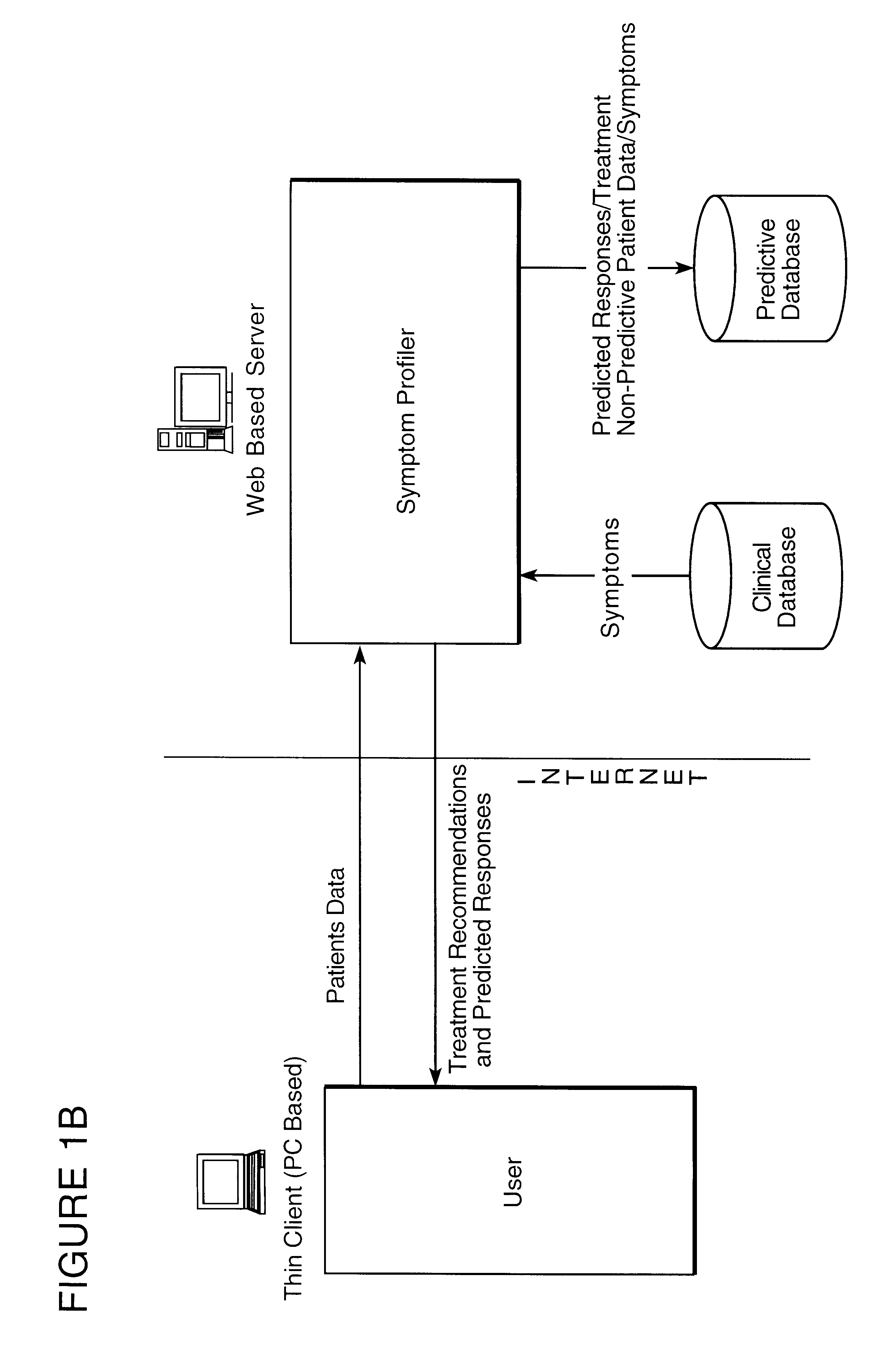Method for predicting the therapeutic outcome of a treatment
a treatment and outcome technology, applied in the field of treatment outcome prediction methods, can solve the problems of inability to achieve the prediction of the outcome, the inability to assign a treatment based on the diagnosis and characterization of the disorder, and the difficulty in determining the correct treatment regime for a patient, etc., to achieve the effect of increasing precision, increasing accuracy and precision
- Summary
- Abstract
- Description
- Claims
- Application Information
AI Technical Summary
Benefits of technology
Problems solved by technology
Method used
Image
Examples
Embodiment Construction
Factors for analysis of recovery patterns were selected from the Hamilton Depression Rating Scale (HDRS). Three types of factors, physical, performance and psychological, were included. Generally described these factors include: early sleep; middle and late sleep; energy; work performance; mood; cogitions; and anxiety. General methods useful for statistical tests for verification of the modeling efforts as modified for use with a neural net model which correct for over-fitting are described by Luciano (Luciano; U.S. Provisional Patent Application Ser. No. 60 / 041,287, filed Mar. 21, 1997). Also described therein are time series prediction verification methods to validate results obtained and outcome prediction verification methods.
Referring now to FIGS. 1A and 1B, a symptom profile developer and a system architecture for Phase I, (idealized profile development), respectively are illustrated. FIG. 1a provides an overview of the development of the symptom profiler. A prototypical syste...
PUM
 Login to View More
Login to View More Abstract
Description
Claims
Application Information
 Login to View More
Login to View More - R&D
- Intellectual Property
- Life Sciences
- Materials
- Tech Scout
- Unparalleled Data Quality
- Higher Quality Content
- 60% Fewer Hallucinations
Browse by: Latest US Patents, China's latest patents, Technical Efficacy Thesaurus, Application Domain, Technology Topic, Popular Technical Reports.
© 2025 PatSnap. All rights reserved.Legal|Privacy policy|Modern Slavery Act Transparency Statement|Sitemap|About US| Contact US: help@patsnap.com



